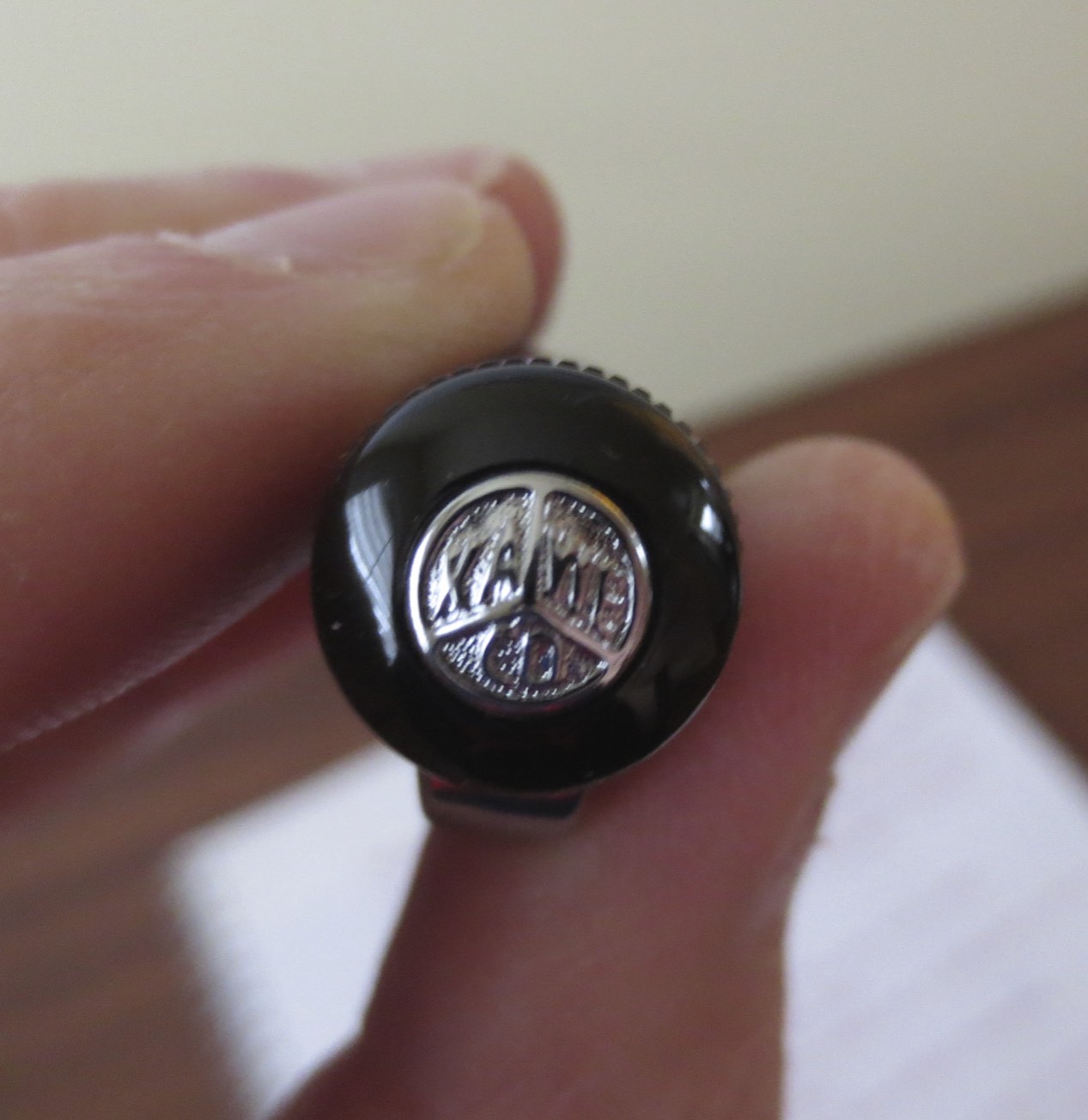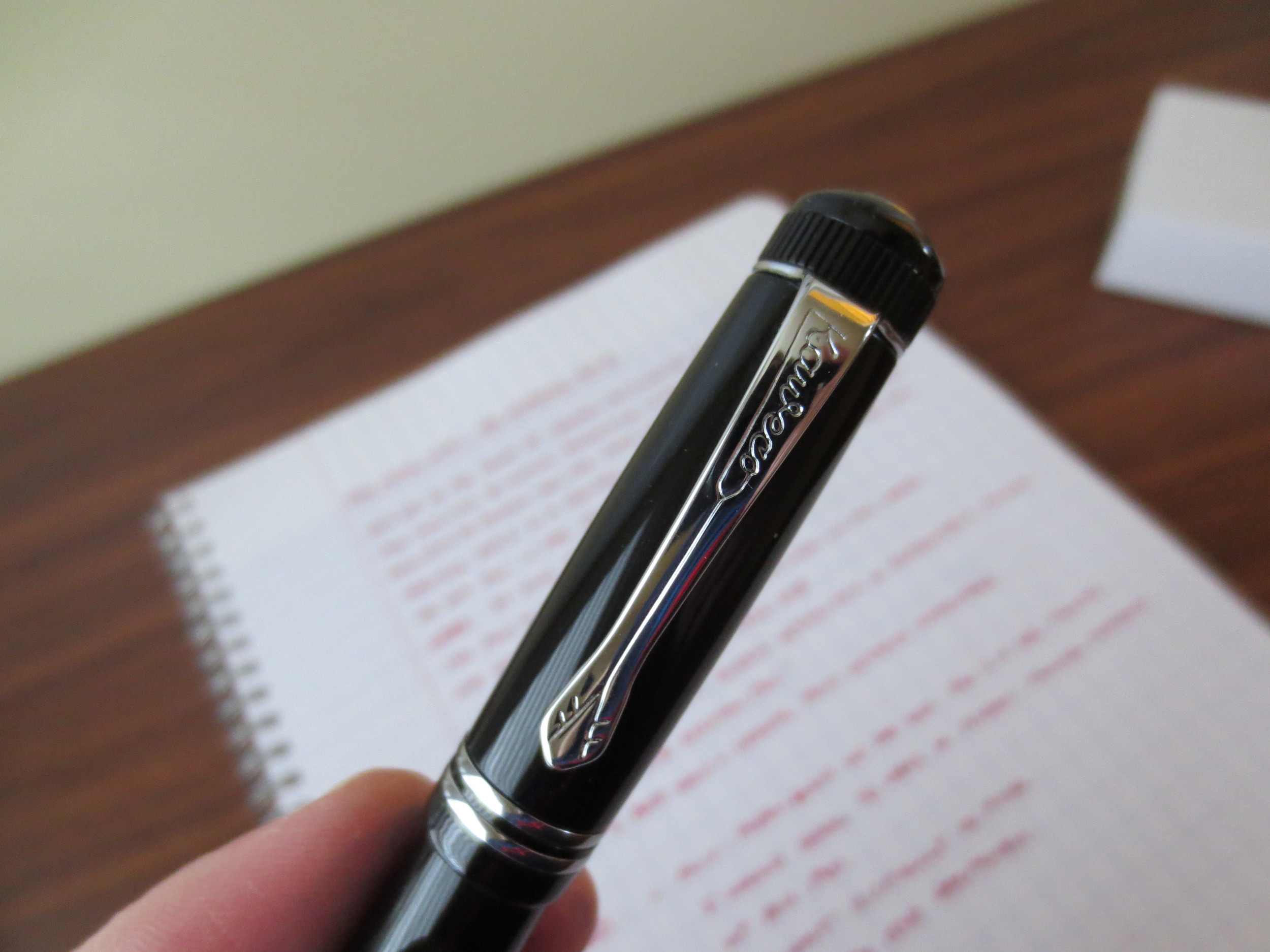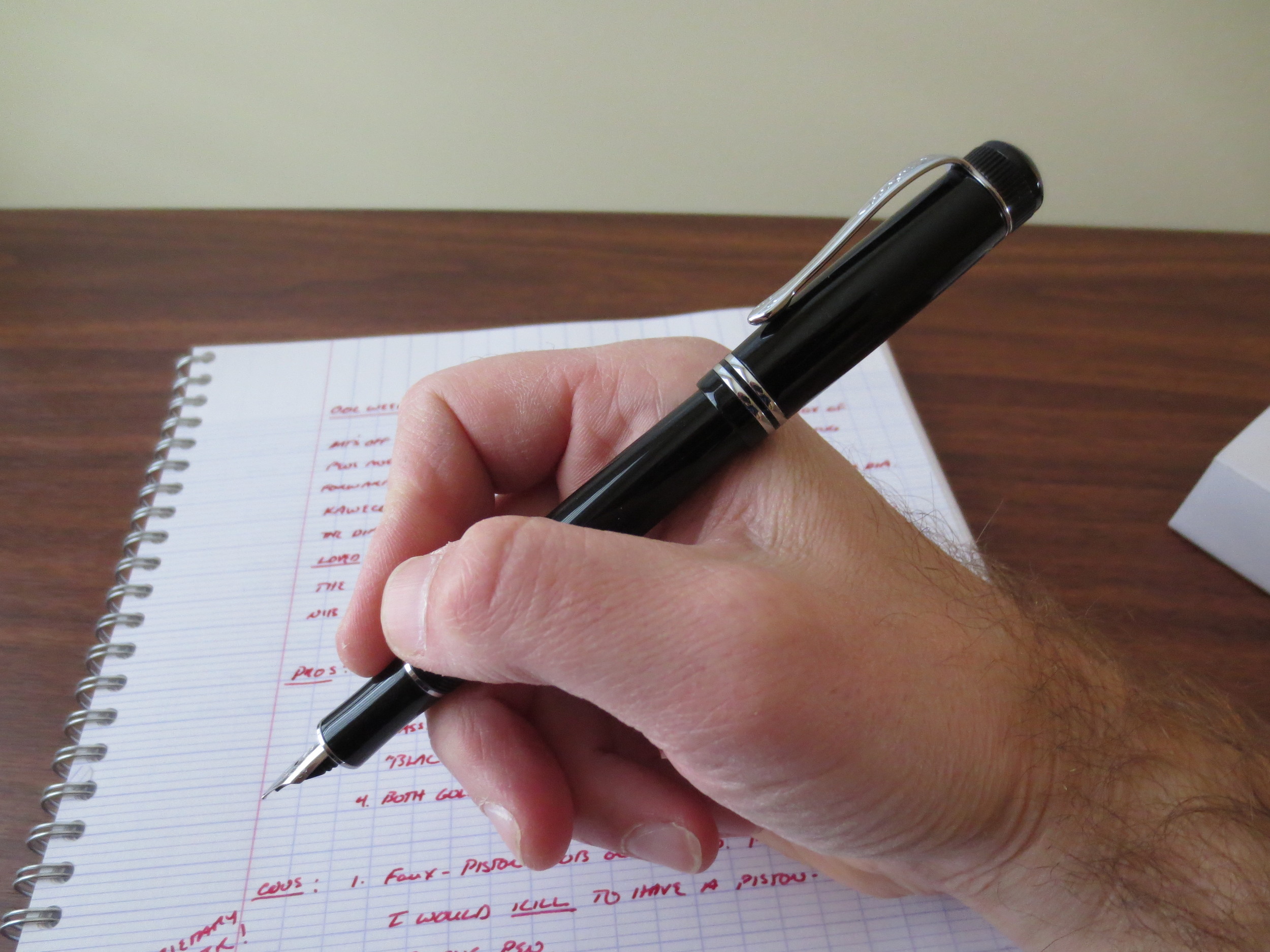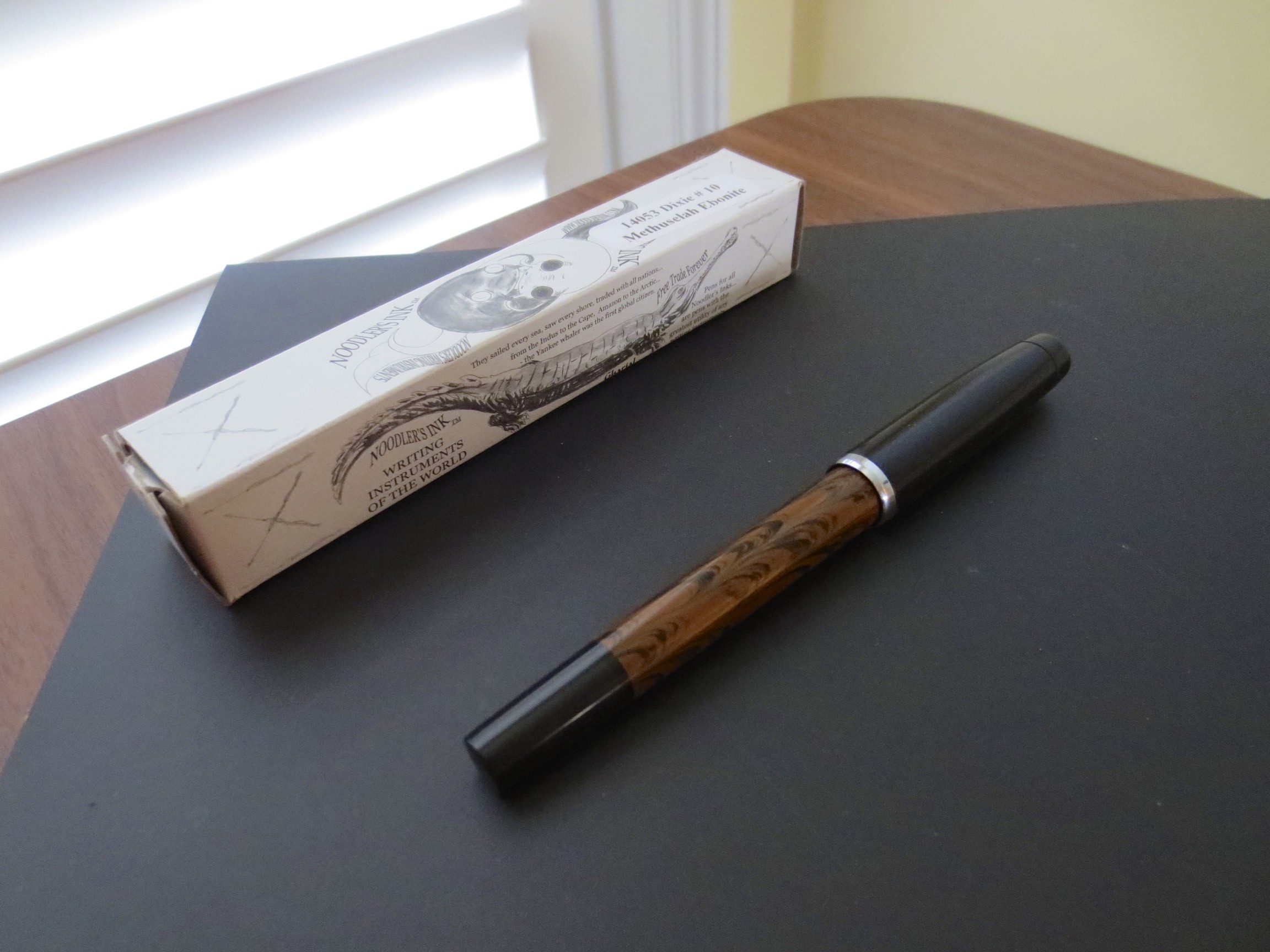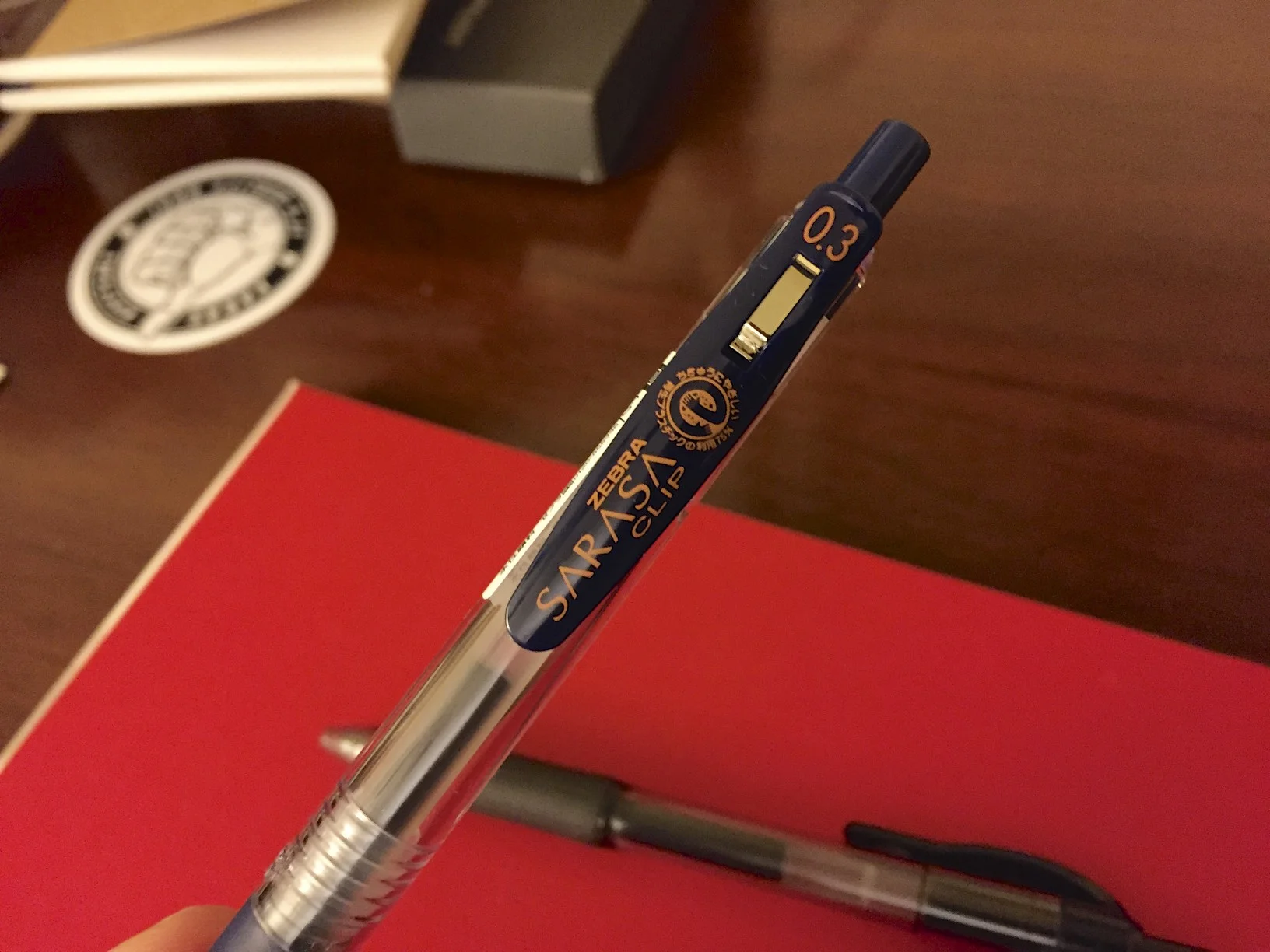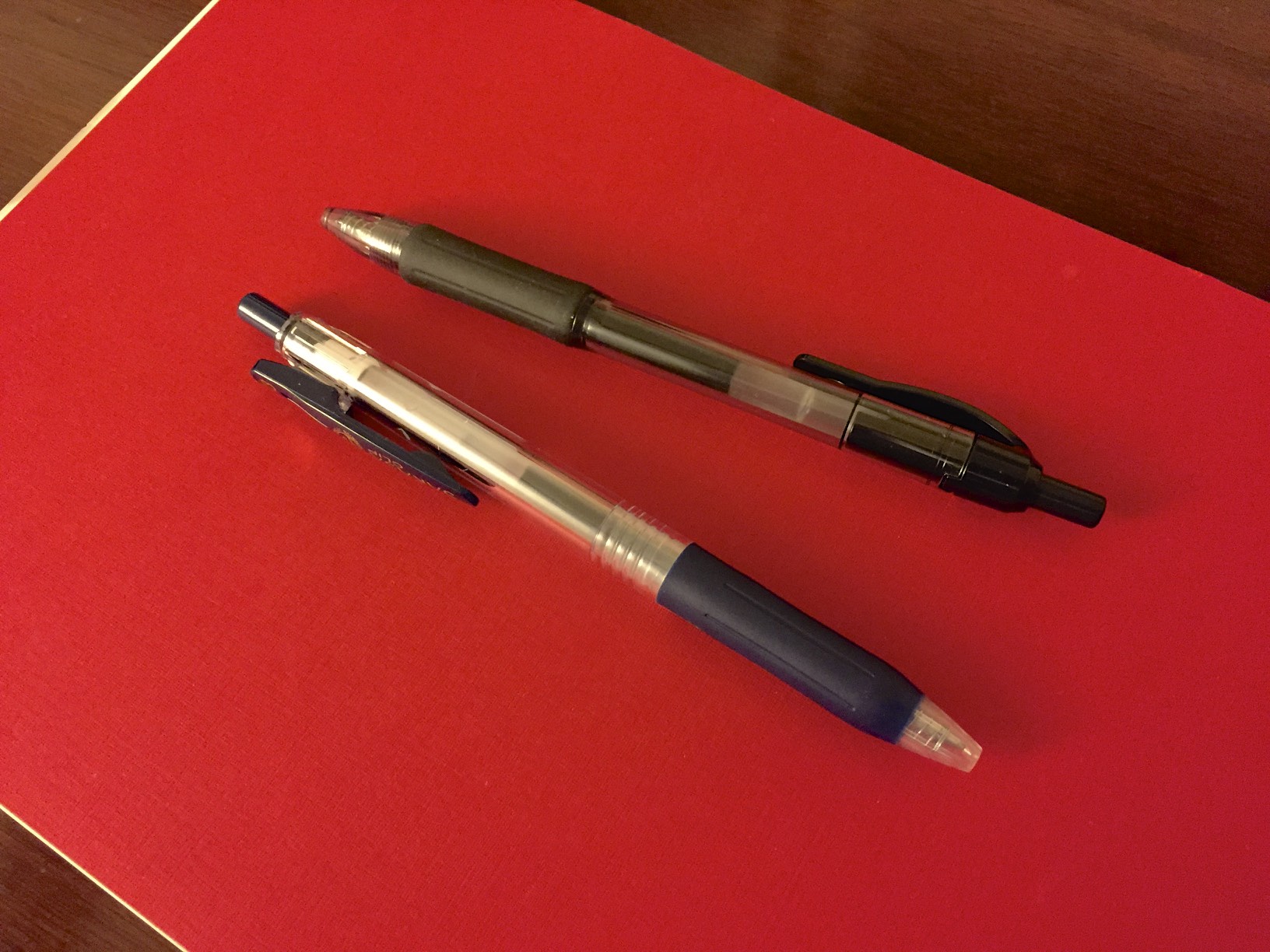Thanks to the folks at Kaweco for allowing me to take one of their high-end pens, the Dia2, for a test drive. In summary, this is an excellent pen that deserves to be in your pen case. It’s understated and classy looking, and sports the same killer steel nib that many love on the Kaweco Sport. To boot, the nibs are interchangeable, so if you have a Sport that writes well and that you love, you can simply swap the nib out and use it on multiple pens.
The Kaweco Dia2 in its presentation box.
The Dia2 is, like the Sport, a reissue of one of Kaweco’s classic pens, the Dia. And, like the vintage Sport, the original vintage Dia was a piston filler. I’ll go ahead and get my one criticism of this pen out of the way: it’s designed to look like a piston filler but fills only by cartridge/converter. I know that by foregoing an integrated filling system, Kaweco kept the price of the pen down in the $100 range, which makes it an outstanding bargain considering how good this pen looks and performs, but something about the “imitation” piston knob on the end of the Dia2 looks sorta cheesy. I know this might not go for most people, but I’d be willing to spend more money on this pen to pay for the piston system. Also, the Dia2 seems to take a proprietary converter; my standard Schmidt and Waterman converters are too long to fit the Dia2. Anyway, with that taken care of, here’s what I like about the rest of the pen: everything else.
Build Quality
Like most Kaweco pens, the build quality on the Dia2 is excellent. It’s a black resin pen with chrome trim. Both the body and trim of the pen are well executed; I couldn’t find any visible manufacturing flaws on the pen I tested. Also, the resin used in the Dia2 seems to be exceptionally scratch-proof. Normally, after you post a pen at least once or twice, the barrel will show some micro-scratches. This pen does not, even after a week or so of regular use.
The pen is noticeably lightweight. I don’t mean this in a negative way: it doesn’t feel flimsy. Rather, it weighs enough to feel serious but is still light enough to use for marathon writing sessions. (I’ll concede that this is probably attributable, at least in part, to the lack of a heavy piston-filling system, FWIW, but I suppose they could always go plastic and rubber, like TWSBI.) The Dia2 also fits my hand very well, posted or unposted, which is rare for me, as I normally always have to use a pen posted to obtain the desired balance while writing.
The Nib
Kaweco Dia2 "sporting" the Sport nib. (sorry, couldn't resist)
I’ve reviewed the nibs from the Kaweco Sport and Kaweco’s other pens here, so you all know I’m a fan. Kaweco’s nibs (at least in the fine and medium sizes) are smooth, high quality stainless steel nibs. I’m looking forward to testing out their gold nibs, hopefully sometime soon. My main criticism of Kaweco’s other full-size pens, however, has been that by using the Sport nib, these pens appear awkward because the nib looks too small. Not so with the Dia2—the nib size works, for whatever reason that may be. It seems to be an intangible thing. Perhaps it’s the way that the barrel is slightly tapered on both ends?
Handwritten ink review in Kaweco Ruby Red
Takeaways
I used this pen for a solid week without a hiccup. Since we’re now in the holiday season, I’ll go ahead and recommend this pen as a great gift idea for someone wanting/needing a professional-looking, quality writing instrument that doesn’t break the bank. I personally like the “black German pen” aesthetic, especially the black on chrome. (Gold-plated trim is also available.) It’s nice to be able to buy a pen that looks this good and writes this well for just over $100, as opposed to shelling out $400 for other companies' "entry level" pens cast from what is probably the same "precious resin." While I personally wish that the pen came with a piston-filler, I can live with refilling cartridges or purchasing a Kaweco converter.
Full disclosure: Kaweco provided me with this pen to review, free of charge. This didn’t influence my opinion on the pen’s quality or performance.

